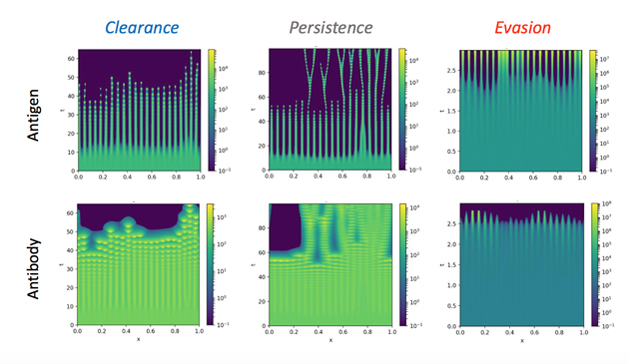Our group's research

As vertebrates' unique defense, the adaptive immune system is extremely complex and remarkably organized at the same time. It is composed of numerous interacting parts whose coordinated action across a multitude of length and time scales confers the host protection against ever changing challenges, e.g. an evolving universe of microbial and viral invaders.
Our group uses concepts and machinery from statistical mechanics and condensed matter theories, complemented by numerical realizations and computational modeling, to build predictive physical description of adaptive immunity. We work to find answers to important unanswered questions, including: How do effective immune responses emerge from multi-scale organization? How shall we characterize various challenges faced by the immune system and quantify their relatedness? What features of immune cells govern their collective behavior? How do immune receptor repertoires evolve in programmed and adaptive antigenic environments?
Active matter is a name for a broad class of condensed matter systems that are self-driven out of equilibrium. This term covers both living systems and their inanimate imitations that range in size from subcellular to oceanic scales. Inside a fairly crowded live cell, as the many interacting molecular constituents locally sense the environment and individually dissipate energy to move and do work, collectively spontaneous directed motion occurs or macroscale contractile stress can be generated, allowing global functional processes to be carried out.
We develop generic theoretical frameworks and computer simulations to understand these incredible active self-organization phenomena and learn design principles for novel materials. In particular, we want to investigate responsive network materials with adaptive connectivity and hence dynamic stress distribution. This relies on feedbacks between local mechanical environment and active force generation, which might enable resonance behavior that helps enhance material performance.
We have also started exploring opportunities at the interface of these two research areas which represents an exciting front that bridges molecular complexity of subcellular constituents and evolutionary driving forces that shape the collective response of cell populations.